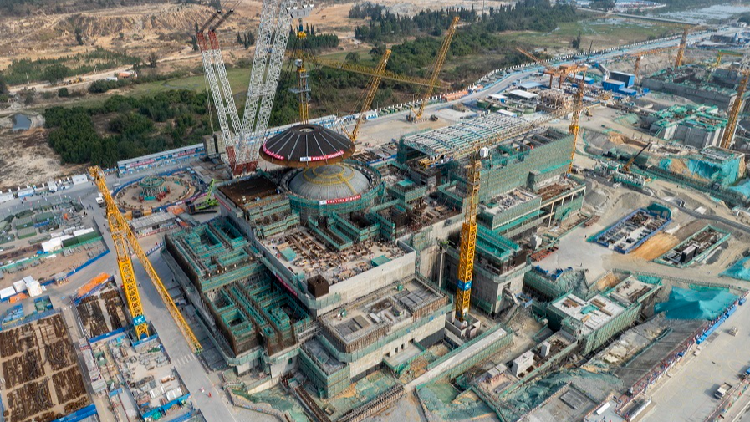First commercial small modular reactor completes main construction
The world's first commercial land-based small modular reactor (SMR), "Linglong One," successfully installed its external dome in Changjiang, Hainan Province, marking the completion of the primary structure of the nuclear plant.


The world's first commercial land-based small modular reactor (SMR), "Linglong One," successfully installed its external dome in Changjiang, Hainan Province, marking the completion of the primary structure of the nuclear plant.
"Linglong One" is the first SMR (small modular reactor) globally that passed the universal safety review by the International Atomic Energy Agency.
The installation adopted a new way to assemble the plant as this dome installation combined the steel roof and reinforcing bars in one hoisting procedure.
The assembly of the dome and the binding work of the rebar on it were all completed on the ground, which significantly boosted the efficiency.
"The total hoisting weight of the external dome was about 550 tonnes. It is the heaviest item in the 'Linglong One' project," said Chen Weimin, a representative of nuclear projects in Hainan under China National Nuclear Corporation.
An SMR is a nuclear reactor with a power capacity of up to 300 MWe, which is about one-third of the generating capacity of traditional nuclear power reactors.
It's smaller, cheaper and can be deployed more flexibly. It also features environmental friendliness and high safety. In light of global climate change, the technology has become one of the key directions for a new round of nuclear energy technology transformation and industrial development.
With a power generation capacity of 125 megawatts, Linglong One can generate 1 billion kilowatt-hours of electricity per year once completed, which can enable the need of 526,000 households, and is equivalent to reducing carbon dioxide emissions by 880,000 tonnes, or planting 7.5 million trees, said the developer China National Nuclear Corporation.
Find more stories on the environment and climate change on TROIB/Planet Health












